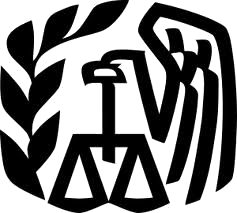Once your Chapter or SIG has been approved by the ICG board, there are certain things that your group needs to do to finish getting set up and start running. This page provides some helpful tips to help your group be successful.
If yours is a new group, you'll want to carefully review these tips because most of them will apply. If your existing group has just affiliated as an ICG Chapter, it probably already has a mission statement, bylaws, and officers, holds meeting and elections, and has events and other activities. It may even have bank and online payment accounts. We still recommend skimming these sections because some of the information will still be useful.

Chapters and SIGs need to periodically report on their officers and members to the ICG Treasurer, who is currently responsible for handling memberships. Each Chapter and SIG should let the ICG Treasurer know which of its officers will be making the reports. This helps the ICG Treasurer know who to contact in case of questions. Be sure to also let the ICG Treasurer know if this person changes. It usually either the Treasurer or Secretary of the group.
The ICG Treasurer has provided a special spreadsheet template for membership reporting.See the Reporting Membership web page for the template and complete instructions on filling it out. Many Chapters and SIGs maintain their own membership lists using the same template to reduce the amount of effort and possible transcription errors.
Your Chapter or SIG will make an initial membership report, an annual membership report, and a monthly membership update.
Primary Chapters must also remit ICG dues for new or renewing members with their monthy reports. No additional ICG dues are required for members of Secondary Chapters or SIGs. Dues can be remitted by cheque or through PayPal. See the spreadsheet template instructions for details.

Adopting a description and mission statement lets members and others in the community know what your organization does. You can add the them to your website and to any PR material that your Chapter or SIG distributes. Some grant applications, and applications for free or discounted products and services to non-profits, also require including a description and mission statement.
Descriptions and mission statements are often considered important enough to incorporated into the bylaws.
Here is a sample description and mission statement for a ficticious chapter known as The Sasquatch Valley Costumers Guild.
The Sasquatch Valley Costumers Guild (USVCG) serves the costuming community in the Upper Sasquatch Valley area of the state of Confusion. The USVCG is a chapter of the International Costumers' Guild, a 501(c)(3) non-profit under U.S. tax law (EIN: 52-1656188). Membership is open to anyone who lives in the geographical area served by the USVCG.
The mission of the the USVCG is to encourage and facilitate the study, appreciation, creation and wearing of costumes as an art form. Our objectivies are to:

Bylaws (sometimes also called "Articles of Organization") are the "owner's manual" for your Chapter or SIG. They describe the basics of how your group operates, what roles people have, how officers are chosen, and anything else that is important about your group. Bylaws don't have to be complex or legalistic. Like any owner's manual, they should be as simple and clear as possible, yet provide the informaiton needed to operate the product — your Chapter or SIG.
As soon as possible, the initial members who petitioned the ICG board should get together, to create and approve a set of bylaws. This will give your Chapter or SIG time to vote on officers, and select an ICG board representative within the first 30 days after it is approved. This is when your group must submit a list of members and officers, and Chapters must pay dues for ICG members to the ICG.
Your bylaws should cover membership, officer positions and how they are elected, and a procedure for amending them. The initial bylaws and future changes must be approved by your members. See the Sample Bylaws webpage for about creating bylaws for your Chapter or SIG and sample bylaws to use as a starting point. You can also check the websites of other Chapters and SIGs. Many of them post their bylaws, as well as other official documents on their websites (highly recommended).

When your group applied for ICG affiliation, the application included an initial list of officers who serve until the Chapter or SIG approves its bylaws and elects a slate of officers. For a Chapter, they were President, Vice President, Secretary, and Treasurer. These initial officers need not be eligible for ICG membership, or become ICG members once the Chapter has been approved. The Chapter is also not obligated to retain these officer positions in their bylaws. A SIG is only required to have a Chair. ICG membership is required for all SIG members.
Chapters and SIGs can have other officers as well. For example, a SIG may include a Secretary to handle communications and a Treasurer to handle SIG finances if it has dues or accepts monetary donations. Your Chapter or SIG bylaws should identify the officers, their roles, their terms of service, and how they are elected. Your members should also elect officers once they have adopted their bylaws.
Chapters must select an officer at least 18 years of age to be its representative on the ICG Board of Directors. This is the only Chapter member that must be an ICG member. Some chapters designate an existing officer such as the President or Vice President who is also an ICG member. Others select another ICG member who must be made a officer of the Chapter under its bylaws. See Getting Started for ICG Board Members for information and tips to help them get started.
SIGs do not have voting representation on the ICG Board, since SIG members are already represented through their Chapter's ICG board representative. The ICG President appoints an ICG Officer to represent the interest of all SIGs to the board. However, each SIG is welcome to designate a non-voting board observer.
See the Sample Chapter and SIG Officer Job Descriptions page for suggestions on the role of Chapter and SIG officers.

Member and board meetings give your Chapter or SIG an opportunity to discuss how the group is operating, to plan, to indentify problems, and to consider solutions. For Chapters whose members live in close proximity, in-person member and board meetings provide personal contact that can be important for discussions. Chapters that cover a wider geographic area can hold member meetings using an online discussion group (e.g. Yahoo! or Google groups). SIGs will almost always meet online because they are not geographically based and may have world-wide membership.
The frequency of meetings depends on the group. Some Chapters hold short member meetings in conjunction with another event like a monthly salon or sewing get-together. Other groups, especially ones whose members live further apart, hold member meetings only once or twice a year at major functions like a holiday party or an open house event. Quarterly board meetings are generally sufficient for most Chapters and SIGs.
For online meetings, frequency is not an issue because members or the board can meet continuously. As an example, the ICG Board meets throughout the year through the ICG-BOD Yahoo! group. Attendance is taken at the beginning of each month to establish a quorum. The group is moderated by the ICG President as presiding officer. It is open for all members to view but only board members and committee chairs can post. The ICG Board also meets in person one a year at Costume-Con.
Another option is to use one of the free online conferencing calling services (e.g. FreeConferenceCalling.com) . These services allows participants to join the meeting by computer or telephone, and the meeting audio can be recorded an downloaded afterwards. This can be a good option for chapters whose members further apart but value voice interaction.
An advantage of meeting through an online forum or a conference calling service is that there is a record of business that takes place, including motions made and votes taken. It is still a good idea for your Secretary to keep a separate record of motions and votes, just in case something happens to the discussion stream of the online group

An important item to take care of early is adopting a Code of Conduct for your Chapter or SIG. This may seem like an unnecessary step because everyone in the group knows one another and gets along. However, as circumstance change, your Chapter or SIG grows, or it has activities and events that invite outside participation, having a written code of conduct will ensure that everyone is on the same page on what is expected, and provide a way to quickly and consistently deal with issues that come up.
The Code of Conduct does not have to be long or complex. It should deal with several topics that commonly arise, including
The Code of Conduct should spell out a procedures to follow when someone reports an issue,
and a range of options for how misconduct will be dealt with. See the
Sample Code of Conduct webpage for more details and a
sample Code of Conduct that your Chapter or SIG can use as a starting point.

There are a number of occasions where your Chapter or SIG will want to write a letter or create a document that appears on official letterhead for your group. This includes setting up a bank or online payment account, requesting use of an event space, requesting a sponsorship, or applying for a grant.
To be prepared, your Secretary should develop letterhead template for your group that includes a logo, the name, address, email address, telephone number and the title of the sender. If your chapter does not already have a logo, this would also be a good time to create one. The logo can also be used on PR material and the group's website to help identify it.
Most word processor programs provide attractive letterhead templates that you can customize. Officers who need to create correspondence can have customized versions of the template with their own title and signature line. This typically includes the President, Secretary, and Treasurer. Each may also want to digitize their signature in cases where the correspondance is sent as a PDF file by email.

Chapters and SIGs that receive funds from memberships, donations, or events will want to set up a bank account for depositing funds and making payments.
Setting up and managing a bank account is generally a responsibility of your Chapter or SIG Treasurer. Here is a summary of the steps
that most groups will follow when setting up a bank account.
For details on these steps and other useful tips, see the Setting up a Bank Account web page.

An online payment account can be useful to Chapters
and SIGs for accepting and making payments.
There are a number of online payment systems that offer special rates to 501(c)(3) organizations and their units, such as ICG Chapters and SIGs. PayPay is one of the most popular ones. It has a special program for units of 501(c)(3) organizations that charges relatively low per transaction fees (2.2% + $0.30) and there is no monthly fee. A non-profit account is a special kind of "business account" that requires documentation to prove non-profit status.
Setting up and managing an online payment account is generally a responsibility of your Chapter or SIG Treasurer. Here is a summary of the steps
that most groups will follow when setting up an online payment account.
For details on these steps and other useful tips, see the Setting up an Online Payment Account web page.

If your Chapter or SIG is U.S. based, it should consider participating in a special program through the ICG that enables it to become its own 501(c)(3) non-profit organization. Ordinarily becoming a non-profit can take months of time and cost thousands of dollars. However, the ICG's Group Exemption Letter (GEL) program enables any U.S. based Chapter or SIG to become a 501(c)(3) non-profit quickly and at no cost.
The reporting requirements are easy, and free QuickBooks software and templates simplify the process. GEL participation will enable your chapter to apply for government and foundation grants that require non-profit status, and to accept tax-deductable donations of money, goods, and material.
To find out more about this benefit and to apply for inclusion in the ICG's GEL, see the Tax Exempt Status for U.S. Chapters and SIGs webpage.

Soon after your Chapter or SIG has been approved, it's time to get online by setting up a web hosting account, a simple website, a Facebook page, and a discussion group. With so much happening online, it's an excellent way to announce your new Chapter or SIG and communicate with your community. It's tempting to put this off, but doing the basics as soon as possible enables the group take advantage of its early momentum.
Getting online is not difficult and can be done in stages. The basics include include
Once that is done, your Chapter or SIG is ready to move on to set up other kinds of online presence according you its needs, including

Planning activities and events is an important role for Chapters and SIGs. Chapters offer members the opportunity for social interaction and learning through in-person events and activities. Those whose members live close enough to one another can plan for regular activites like monthly get-togethers at members' homes or meeting spaces like a school, community center, or a merchant who is willing to provide space.
Most chapters also plan for events throughout the year that even members who live futher from one another can attend, including classes, stash exchanges, picnics, or attending local conventions, exhibits ,and cultual events together. These events are also a good way to interact with the community and attract new members.
Promoting events through flyers and through social media and email campaings are both good ways to get the word out. See the Public Relations Tips and Media Guide webpage for hints about publicising your activities and events. Also see the Public Relations Templates for Chapters and SIG webpage for examples of flyers tjat your chapter can customize.
SIGs do not have a single location, but they can still hold certain kinds of activities and events. For example, SIG members can use a product like Google Hangouts to set up a video discussion among up to 10 members. This is idea for a group of SIG members with a specific purpose to get together to interactively discuss specific topics. Google Hangouts On-Air enables a SIG member to put on a demonstration or class that is broadcast to other members through a SIG Google+ account and YouTube Channel. The video will also be recorded to a SIG YouTube channel for later viewing. Another tool that works well for this is
SIGs can also plan events such as classes, demonstrations and birds-of-a-feather sessions at conventions on topics related to the purpose of the SIG. This works well for regional or national conventions where several SIG members will be present, but it can also be done at local conventions with only one SIG member in attendance by developing and sharing presentation material so members in different locations can teach the same class or do the same demo.
See the Activity and Event Idea Bank webpage for more ideas about activities and events that your Chapter or SIG can hold to add value for members and reach out to potential new members